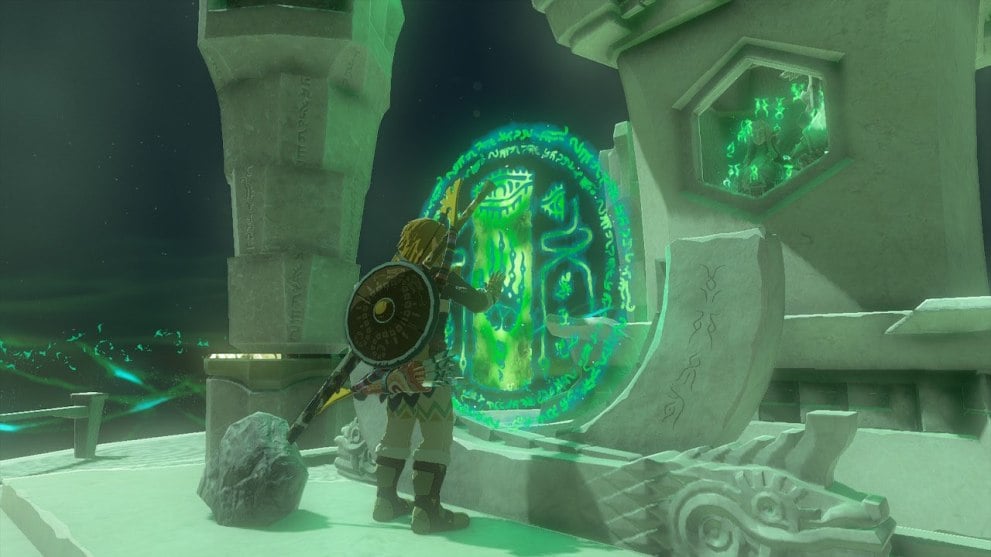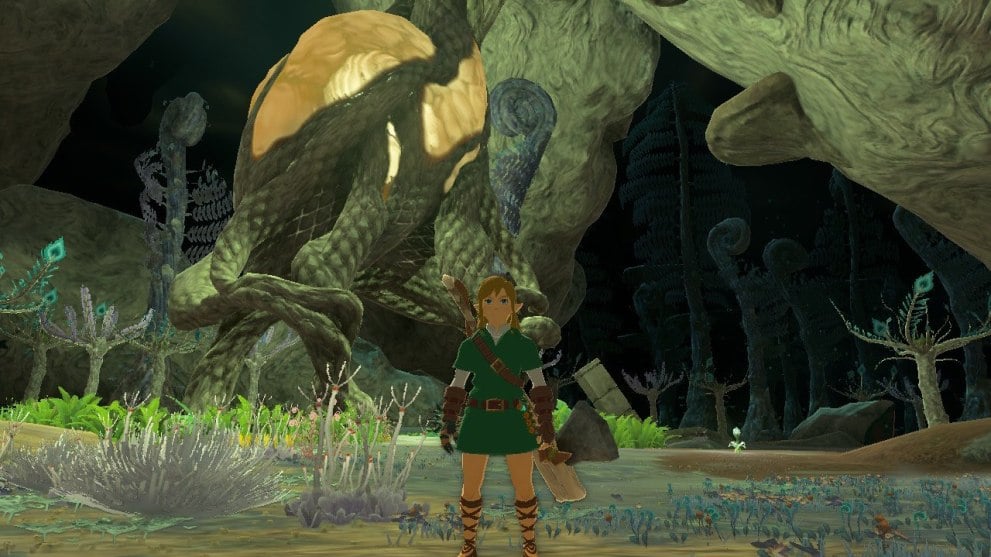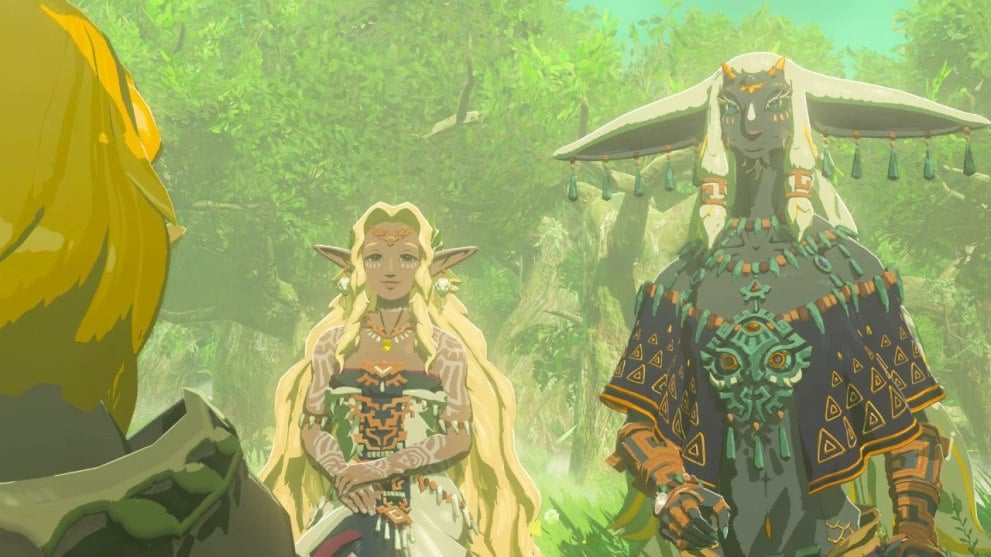The Legend of Zelda: Tears of the Kingdom on Switch
Few games have left a mark as profound as The Legend of Zelda: Breath of the Wild did in 2017. Its sprawling open world and innovative gameplay marked a new era for the series and became an influence for countless other games. Creating a follow up to this masterpiece was always going to be a tall order for Nintendo—how do you significantly improve upon a game that redefined the conventions of Zelda in such a way that it became one of the highest rated titles of all time, setting a new standard for the franchise?
Somehow, Tears of the Kingdom manages to do that. The game takes us on a second journey through this iteration of Hyrule, successfully building upon the strong foundation laid by Breath of the Wild. With new abilities, a captivating storyline, and immersive gameplay, Tears of the Kingdom surpasses its iconic predecessor in many ways, even somewhat rendering the first game obsolete along the way.
One of the defining features of Tears of the Kingdom is the introduction of a new set of abilities for our protagonist, Link. Ultrahand, Fuse, Recall, and Ascend breathe new life into the game, providing players with seemingly unlimited creative options for navigation and exploration of Hyrule.

These abilities far surpass their counterparts from the previous game, allowing players to engage with the world in ways that were previously unimaginable. Ultrahand builds on the Magnesis ability from Breath of the Wild, except now Link can move just about any item he comes across instead of just metal ones. Fuse allows Link to combine items with his sword and shield, which improves the problem of weapon breaking that so many players despise.
Recall is unlike anything we’ve seen before and is quite honestly a programming wonder how it is even possible; Link can cast this ability on nearly any object to send it back through time. This can be used to solve puzzles creatively. Finally, the ascend ability aids with exploration, especially when navigating the game’s hundreds of caves.
Furthermore, the story of Tears of the Kingdom dives deeper into Hyrule’s history than we’ve ever seen before, unveiling the lost world of the Zonai—an ancient race that once thrived in this land. Unlike its predecessor, which required players to piece together Link’s lost memories, Tears of the Kingdom takes a more active approach to storytelling. It weaves an enthralling narrative that reveals the fate of Princess Zelda after her separation from Link in the game’s opening moments.
This dynamic storytelling keeps players engaged and allows for multiple paths to progress, ensuring a unique experience for each player. Characters give specific dialogue based on what exactly you have completed up to that point, and there are many ways to approach story progression.
For example, I went out of my way to follow the story beats in chronological order on purpose, but someone else I know skipped around at a different pace and uncovered a major plot point in a totally different manner than I did. Tears of the Kingdom allows you to make it your own story.
Beyond the story, Hyrule itself undergoes a magnificent transformation in Tears of the Kingdom. Although it is the same land as the one in the first game, some time has gone by and there are a number of changes across each of the regions. The world is much more populated and feels lived-in compared to the lonely feeling in Breath of the Wild.

In addition to the changes of the base map, the introduction of Sky Islands and the Depths presents players with entirely new areas to explore. The Depths, in particular, prove to be a daunting yet rewarding experience, and it is as big as the base map of Hyrule. Initially, the Depths may seem terrifying to traverse, but they quickly reveal themselves as treasure troves of valuable materials.
Players will need to be creative when exploring the Depths—since it is so far underground, it is completely dark, and you will need to find ways to light up each area. Powerful enemies and bosses lurk in every corner here, but you can also reap some rare weapons and unlock intriguing side quests.
Another positive change to Tears of the Kingdom is how the game handled its major dungeons. While Breath of the Wild’s Divine Beasts fell victim to repetitiveness and unmemorable boss fights, Tears of the Kingdom elevates the dungeon experience. The inclusion of elemental temples brings back the essence of traditional Zelda games with exhilarating boss encounters that resonate with fans of the franchise.
There is substantial leadup to each of the temples that genuinely make you feel like you are helping the habitants of Hyrule after the Upheaval event disrupted their lives; it has a sort of Majora’s Mask-like feel to solving each region’s catastrophic problem and seeing a direct result of your actions afterwards.
Though they are a significant improvement to the Divine Beasts overall, the temples in Tears of the Kingdom still fall a tad bit short of the intricate dungeons found in older Zelda titles. The primary objective of hitting five switches to reach a boss can feel repetitive, and the puzzles themselves lack the depth and complexity that longtime fans of the franchise have come to expect.

The inclusion of unique sage abilities do add a touch of novelty, but this doesn’t fully compensate for the relatively basic nature of the puzzles. I prefer the new temples to the Divine Beasts without a doubt, but I still miss the series’ traditional dungeons, especially since the smaller puzzle format can be found within the 152 shrines across Hyrule.
One of the most remarkable aspects of Tears of the Kingdom is its ability to surprise players at every turn. It challenges their preconceived notions about the world established in Breath of the Wild, turning the familiar on its head in ways that made me smile or drop my jaw in shock, especially during its cutscenes. This element of unpredictability breathes new life into the game’s lore.
There are a few inconsistencies and unanswered worldbuilding questions I had while playing (what happened to all of the Sheikah technology, Guardians, and Divine Beasts from Breath of the Wild?), but perhaps only the most hardcore players who care deeply about the lore would even notice or care about these omissions.
One other drawback to the game is the somewhat complex control scheme. There are a large number of actions assigned to a limited buttons on the controller. It can feel overwhelming and clunky, especially during the initial hours of gameplay and for those who may have not played Breath of the Wild at all.
While Nintendo attempted to mitigate this complexity with creative button prompts, mastering the controls requires a pretty significant learning curve compared to most other games. This may deter some players and impact the overall enjoyment of the game, especially since there is no in-game option to reassign buttons. There is a noticeable lack of accessibility considerations, which is disappointing that Nintendo has not caught up to today’s standards in this area.

Overall, Tears of the Kingdom stands tall as a sequel that transcends the great achievements of its predecessor. It takes players on yet another unforgettable journey through the enchanting world of Hyrule. While the temple puzzles may not reach the heights of older Zelda games and the complex controls require a learning curve, these minor setbacks pale in comparison to the grandeur and excitement that Tears of the Kingdom has to offer. It is a testament to the prowess of the developers and a must-play title for any fan of the Zelda franchise.
Pros
Cons
Some plot holes are never addressed.
